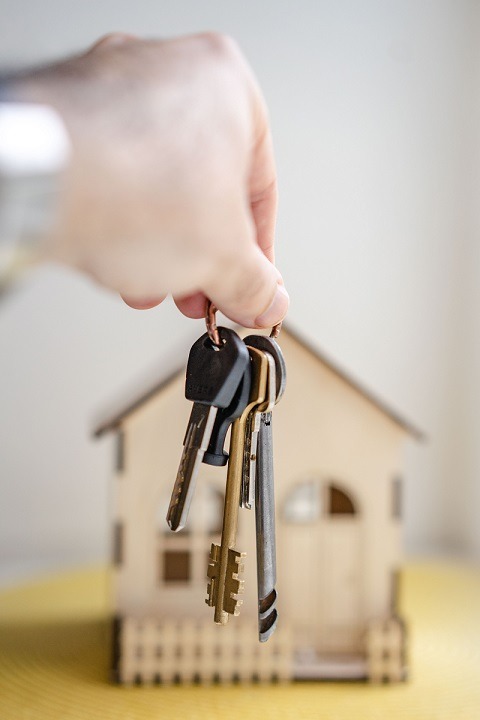
Buyers are frustrated. Many have worked hard for years to get into the position to buy a home, only to find absolutely nothing that’s accessibly priced, or to lose a nice find to better-funded bidders. Now, the vast majority of listings are above the $200K mark. Would-be buyers must keep paying ever costlier rent, rather than saving more for the investment they really want.
On top of it all, here come the rising interest rates. Interest on a 30-year fixed-rate mortgage is above 5% for the first time in years.
It’s understandable that some are giving up. Still, there are reasons for patience, persistence, and hope.
Will Home Prices Come Down?
While rising mortgage rates do tend to depress demand, we cannot expect real estate prices to fall. But why not?
Certainly rising mortgage interest rates will limit many people’s ability to afford a loan. And that would mean fewer people trying to compete out there. Surely there’s light at the end of the tunnel?
Unfortunately, there are other pressures:
- Even in the worst years for real estate, the prices have almost never gone down. Just check with Fred.
- Nor will we see a repeat of the 2007-08 real estate crash. Once the crash happened, lending rules were tightened up to prevent it from happening again.
- We’re also in a time of rising inflation, costly appliances and cabinetry, and clogged material supply chains.
- Worker shortages, too, have kept the costs of building up, and the supply of homes down.
So, with a limited supply of houses out there, those people already in homes with low-interest, fixed-rate mortgages have no reason to let go of them now. Inflation is stubborn. So are worker shortages and high worker costs. They’ll be with us for some time.
As dastardly as this market is, both prices and interest rates could go up quite a bit more in the years ahead. In most areas and for most people, giving up on the market for a year (or a few years) probably won’t be the cost-effective option over the long haul.
This means the best policy for now is saving, keeping up a decent credit profile, and staying alert for an unusual opportunity. Perhaps co-owning. Or accepting a broader range of locations. Maybe even finding an agent who specializes in bank-owned homes.
☛ Get ready, and stay ready, to apply for a mortgage. We have tips. Get the Facts on Credit Scores and How to Improve Yours.
Rent Vs. Mortgage Is Not the Whole Question

Increasingly, in many markets, buying a house is cheaper than paying rent. For people whose credit profiles make them eligible for mortgage loans, buying could be cost-effective. Because wages aren’t rising at the same pace as rents, a fixed-rate mortgage can feel like a necessity today.
Granted, the cost of owning a house involves more than the mortgage principal and interest. There’s the down payment and closing costs. There are the moving costs, the furnishing costs, the repair and redecorating costs. There might be association fees. There are property taxes and homeowner’s insurance premiums — although they are typically folded into the mortgage payment. There is title insurance.
On the other side of the coin, the down payment and moving costs soon become a memory. Gradually, the owner builds equity. The more years an owner holds onto the house and pays down the mortgage, the more equity builds up, as real estate values generally rise.
Those who have already bought homes, especially those who bought in the past few years, are keenly aware of how fortunate they are at this moment. They are on the ladder. Their monthly housing costs are stable. They are able to deduct a portion of their mortgage interest and property taxes on their annual returns. And their rising home equity is working for them in the background. For some of today’s owners, the rising value of their homes is essentially their biggest source of earnings!
What Loans Don’t Need Large Down Payments?
If we’re assuming, probably correctly, that prices won’t come down, how does a borrower prepare for the upfront costs of buying today? Not every responsible borrower can easily put 20% down on a home — especially now. There are options for putting 3% or 3.5% down. Speak with a mortgage consultant who works with one or more of the following offerings.
- Government-backed loans. Applicants with FICO® scores of 580+ can look at FHA options with down payments as low as 3.5%. There’s a debt-to-income ratio limit of 43% (38% being housing costs). Higher credit ratings allow people to borrow more. VA loans (for veterans) and USDA loans (for homes in designated areas) technically require no money down for eligible borrowers.
- Fannie Mae’s 3% HomeReady® conventional loan. This is for buyers with FICO® scores of 620+, with modest incomes and debt-to-income ratios as high as 50%. Check income limits in your area, and learn about the coursework on the eligibility page. This loan permits down payments and closing money to come from gifts. Co-borrowers are acceptable.
- Also available for as little as 3% down is Freddie Mac’s Home Possible® mortgage. There’s a 660 minimum credit score. Self-employed applicants may submit alternative credit data. Check the mapping tool for income rules. Alternatively, Freddie Mac’s 3% down HomeOne® mortgage has no income limitations. Freddie Mac’s free CreditSmart® tools assist Home Possible and HomeOne borrowers “through every stage of their financial capability and homeownership journey.”
- There is also a 3% down payment option for any borrower, regardless of income bracket. Tim Lucas, for My Mortgage Insider, says this about the conventional 97 loan: “According to Fannie Mae’s Loan Level Price Adjustment (LLPA) chart, a borrower can have a score as low as 620 and still qualify…” Lucas adds that “some borrowers will receive the same or lower rate for a 3% down loan compared to those with 20% down.”
Lenders have their own sets of eligibility criteria. The applicants’ credit reports and credit scores are among the first things they examine. Lenders also look for two years of stable work and wage history. A mortgage specialist can advise applicants with non-traditional incomes on what sources a loan underwriter will accept. All applicants for low-down-payment loans should be aware that their monthly payments will include private mortgage interest (PMI). The FHA’s isn’t cancellable, so the borrower would have to refinance to get out of it.
And the Best Time to Shift From Renting to Buying Is…
When you want to, and can afford it, and the circumstances work out well for it. When the house isn’t more trouble to fix up than it’s really worth. And when you’re ready to live in a place for long enough to build equity.
That’s true in 2022, and it’s true every year.
Supporting References
Lucia Mutikani for Reuters.com: Record High U.S. House Prices, Rising Mortgages Depress New Home Sales (May 24, 2022).
Patrick Chism for Rocket Mortgage® via QuickenLoans.com: Rent Vs. Buy: How to Decide in 5 Steps (Feb. 28, 2022).
Deeds.com: Just 3% Down? Here’s How It’s Done (Nov. 26, 2021).
And as linked.
Photo credits: Mikhail Nilov and Oleksandr Pidvalnyi, via Pexels.
